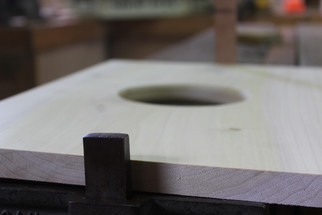Posted by Steve Head on 3rd Apr 2023
What Are The Characteristics of A Poplar Cajon
Poplar is a popular choice for cajon builders due to its unique tonal properties, affordability, and availability. This hardwood is known for its warm, balanced sound that is characterized by its strong midrange and smooth sustain. Poplar is also a lightweight wood that can provide a comfortable playing experience, making it an ideal choice for percussionist who are looking for a snare cajon that is both affordable and easy to play.
One of the key benefits of using poplar as a cajon building material is its affordability. Poplar is a relatively inexpensive hardwood that is widely available, making it an ideal choice for cajon builders who are looking to create high-quality drums at a reasonable cost. This makes it a popular choice for beginner and intermediate players who may not want to invest in more expensive cajon materials until they have developed their skills.
Poplar is also a lightweight wood that can provide a comfortable playing experience. Percussionist who are looking for a cajon that is easy to play and maneuver may prefer poplar over heavier woods like maple or oak. This can make poplar cajons an ideal choice for those who play long gigs or who need to move their cajon frequently.
Another benefit of using poplar as a cajon building material is its tonal qualities. Poplar has a warm, balanced sound that is characterized by its strong midrange and smooth sustain. This makes it an ideal choice for players who are looking for a drum that can provide a solid foundation for their playing, without overpowering other instruments in the mix. Poplar drums can also provide a versatile sound that can be tailored to a wide range of musical styles and settings.
There are a few different types of poplar that are commonly used in drum building, including yellow poplar and tulip poplar. Yellow poplar is a popular choice for drum builders due to its availability and affordability, while tulip poplar is known for its unique tonal qualities and can provide a brighter, more focused sound than yellow poplar.
While there are many benefits to using poplar as a drum building material, there are also some potential downsides to consider. For example, poplar is not as durable as some other hardwoods like maple or oak, and may be more prone to denting and scratching over time. Additionally, poplar may not be as versatile as other drum materials, and may not provide the same level of customization options as woods like birch or maple.
In conclusion, poplar is a popular choice for cajon builders due to its unique tonal properties, affordability, and availability. Whether you're a beginner or intermediate drummer who is looking for a high-quality drum at a reasonable cost, or a seasoned professional who is looking for a lightweight, comfortable playing experience, poplar can provide a warm, balanced sound that is ideal for a wide range of musical styles and settings. While there are some potential downsides to using poplar as a drum building material, the benefits of this unique hardwood make it a top choice for many drummers and drum builders around the world.
Check out my Blog Post What Are The Characteristics of A Birch Cajon


